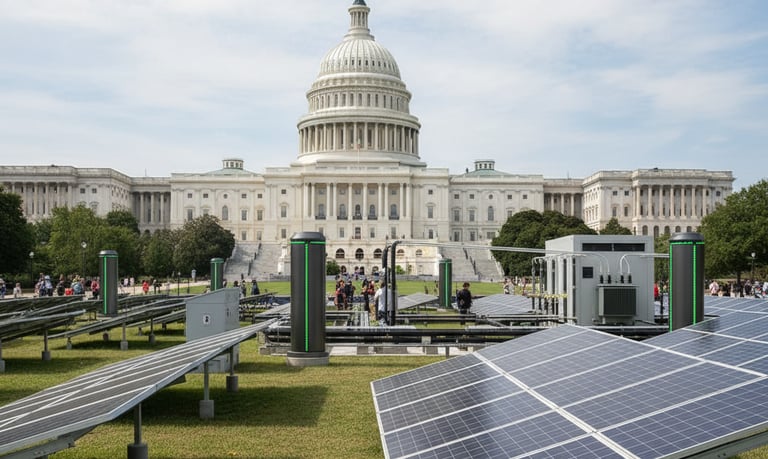House Dems Unveil Energy-Tech Plan to Drive Major U.S. Grid Investments
POLITICS


House Democrats have released an energy-tech blueprint that could reshape U.S. infrastructure. The plan calls for major grid upgrades, domestic clean-tech manufacturing, and new investment priorities — signaling legislation that may redefine America’s long-term energy strategy.
House Democrats have released a new energy-technology investment plan that lays the groundwork for a major policy push in 2025, outlining where they want Congress to steer billions in federal spending next. The blueprint — obtained through recent congressional documents — focuses heavily on “emerging clean tech,” domestic manufacturing, and large-scale grid upgrades designed to modernize the country’s energy backbone.
The plan does not introduce new legislation by itself, but it functions as a policy roadmap, signaling which proposals Democratic leaders expect to move next session.
A Strategic Shift Toward Clean Technology Manufacturing
The document emphasizes a pivot toward U.S.-based production of advanced energy technologies. This includes domestic manufacturing of:
Grid-scale batteries
High-efficiency solar components
Next-generation nuclear systems
Hydrogen technologies
Transmission and grid-stabilization hardware
The underlying goal: reduce supply-chain dependence on foreign manufacturers — particularly China — and build out the infrastructure needed to support an electrified economy.
Democrats argue that the U.S. risks falling behind unless it invests aggressively in the technologies that will define the next decades of industrial and energy growth.
A Massive Modernization of the Power Grid
A key element of the plan is a push for grid upgrades. According to the document, the current U.S. grid cannot support the expected surge in data centers, electric vehicles, renewable energy storage, and power-demand spikes tied to AI computing.
The proposed initiatives include:
Expanded high-voltage transmission lines
Faster permitting for energy projects
More resilient systems to withstand storms, cyberattacks, and heatwaves
Incentives for utilities to integrate advanced load-management tech
The blueprint frames the grid as the “central bottleneck” of the clean-energy transition — and the primary area where federal action is urgently needed.
A Precursor to New Legislation
While the document isn’t a bill, it reads like a legislative preview. Similar blueprints in previous years have later appeared as proposed federal investment packages or incentive programs.
If Democrats regain full control of Congress, this plan would likely serve as the foundation for:
A major national clean-tech spending package
New domestic manufacturing incentives
Grants for next-gen energy research labs
Regulatory efforts aimed at accelerating the build-out of transmission infrastructure
The roadmap also positions clean technology as both an economic opportunity and a national-security issue, especially as China continues to dominate global energy supply-chain markets.
What Happens Next
Committee chairs and energy-policy leaders are expected to begin referencing this plan in public hearings and markup discussions. Even without a full Democratic majority, pieces of the blueprint could pass in bipartisan form — particularly grid improvements, which have support across the aisle.
For now, the release of the plan signals that Democrats intend to make energy technology a top-line legislative priority, framing it as essential to both economic competitiveness and national security.
